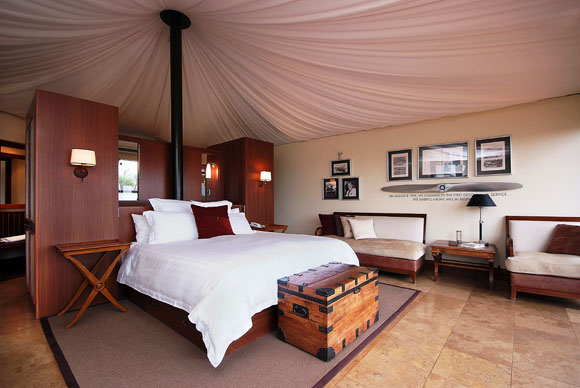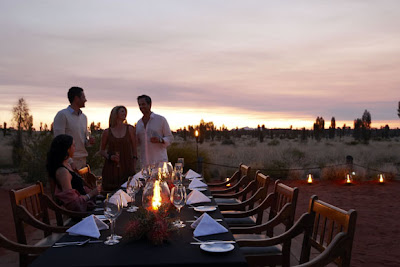Saturday, April 27, 2013
OFFBEAT DUBLIN- Museum of Natural History
9:10 PM
0 comments
This was my
second trip to Dublin, and I was determined to see Dublin beyond the usual pubs
and literary heritage.
My guide
Mairtin walked me through Georgian neighbourhoods and suddenly took a detour on
Merrion Street to show me a place that he had loved as a child.
I entered
the dusty, slightly musty Museum of Natural History which first opened in 1857
and was amazed to see high ceilings, and lovely floor mosaics and grilles with antique
Victorian show cases filled with more than 2 million specimens from Ireland and
all corners of the globe. The Dubliners call it the Dead zoo and the museum is typically
Victorian design and spirit when people believed in ‘shoot it, stuff it and
show it’.
Giant deer
skeletons, mammals, birds and fish, a butterfly collection, insects pickled in
jars, gigantic whale and shark specimens suspended from the ceilings this
museum even has a dodo skeleton !
I even saw
a polar bear shot by an explorer with the bullet mark intact.
There were
beautiful glass animal figurines of hard- to- preserve animals like anemones
and jelly fish done by a father and son glass maker duo from Dresden.
And the
best for the last, the museum is free of
charge! A great way to go back in time to old Dublin!
Wednesday, April 24, 2013
The sacred island of Delos- Greece
One of the most fascinating places that I visited in Greece was
the island of Delos a boat ride away from the tourist heaven Mykonos.
Delos was the legendary birthplace of the twins Artemis and
Apollo and a place where the Greek came to worship various gods and goddesses
at the temples built there.
The island is an archaeological site- with excavations still
going on. In ancient times the island was so sacrosanct that no one was allowed
to spend the night here. In 167 BC, it became a hub of commercial activity and
merchants settled here and built luxurious home. We landed on the island and
spent a day walking through the ruins, with the
sounds of bees and cicadas in the air, with a map in hand.
One of the most gorgeous sights on the island was the Avenue of
the Lions. At one time there were between 9 and 12 lions, crouched marble
beasts, standing guard at the Sacred Lake.
The lions in the photo are replicas but the real Naxian lions
can be seen in the island's archaeological museum.
I loved these mosaics, well preserved columns, statues, and resident
chameleons on rocks.
I visited the small museum on the island with some of the finds
from the archaeological digs.
The only other people we saw were these students on a field trip..
I had a fresh orange juice here ( the owner said they were from Crete) and sat gazing at the ruins....A great way to spend a day away from Mykonos...
Friday, April 12, 2013
SPAIN'S OWN VERSAILLES
One of the
best excursions from Madrid was the royal palace La Granja de san Il defonso
also called ‘Little Versailles’. At one
time a farm stood on the site of this palace which explains its name- ‘La
Granja’ meaning farm in Spanish.
This slate
roofed summer palace was built by King Felipe V, the first Bourbon king of
Spain who came from France (he was the grandson of Louis IV)... He was probably
homesick for France and he modelled this on Versailles, where he spent a large
part of his childhood. The La Granja palace has hints of Moorish design and
some Italian touches as well.
I loved my
morning spent here walking around the extensive grounds, with trees from
different parts of the world including giant sequoias, the spectacular setting
at the foothills of the Sierra
de Guadarrama mountains and visiting the rooms inside, with one hall devoted to
extravagant Flemish tapestries.
Felipe V
got sculptors and designers from Paris who laid out elaborate gardens and 26
ornate sculptures which act as fountains.
The
fountains are all cast from lead so that do not rust, then they are painted
bronze or bleached to look like marble- all of them depict allegories and
mythological characters ranging from
Diana to Apollo.
The King
first built this as a retreat but later it became a focal point of the court.
Photography
was not allowed inside the palace, but I was amazed at the opulence: Carrara
marble, frescoes, huge chandeliers, antique French clocks and 16th
century Flemish tapestries that were woven form gold, silver and silk that they
say took one year of work for just one square meter. The piece de resistance of the collection is
the Honours and Virtues series, based on cartoons by Goya.
The fountains have pools, jets, spouts and
basins and amazingly the original fitting and pipes are still in working
condition- they are turned on certain special days and holiday.
Wednesday, April 10, 2013
Glamping in the shadow of Ayers Rock..
My front
row seat to Uluru or the Ayers Rock in the red heart of Australia was the ultra
stylish luxury tented property Longitude 131, with palatial tents named after
famous Australian pioneers or explorer
in muted shades of beige and brown.
Voyages
which owns the hotel claims to have the best environmental practice in the
Australian tourist industry. I hear that there was great care taken
during construction- most of the work was done by hand without
using heavy earth moving equipment and care was taken to see that there were no
sacred sites in this area.
The tents
are actually steel structures on stilts, with polyester roofs to reflect heat
and rain. The ceiling dome supported by a tall pole has white flowing material
billowing in graceful folds to give that illusion of camping.
I loved the
contemporary colonial decor inspired by the luxury tented camps of Africa with each room themed on a Outback Explorer with
hand drawn maps, paintings, photographs and memorabilia dotting the walls.
The Dune
House in the middle of the resort is the ‘living room’ of the resort a communal
space where you can meet other guests or relax. Where you can lounge in comfy
leather couches the cosy library stocked
with maps, books and games and have a few drinks or chat with friends.
All 15
rooms of the hotel look out into Uluru. The rooms have rustic stone floors,
solar water heating and floor to ceiling glass doors that can be opened to let
in the desert air with a mesh to keep out the creepy crawlies.
The room
combines old world charm with the joys of technology with a I pad in every room
loaded with Australian movies, books and games like monopoly as well as Bose
speakers. The wardrobe
and mini-bar have metal mesh-work doors which attempt to replicate early
settlers meat chests.
In keeping
with the eco friendly motif of the resort. I find branded stainless steel
bottles for carrying water with a Royal Doulton pottery urn for refills. The
resort makes the maximum use of the contrast between the wildernesses outside
the creature comforts inside. The bathroom has a large sink inspired by the
watering troughs for horses of early Australians.
The resort has no gym or spa- only a petite
pool where you can soak with views of the red beauty. But the hotel offers
myriad activities around the red centre ranging from walks and treks with a
guide to explain the unique eco systems to a swish Table 131- a a candlelit
five-course feast held in the desert under the stars.
Powered by Blogger.








